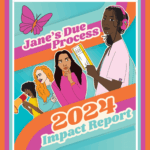Amidst current acts of infringement upon reproductive welfare (considering SCOTUS’s overturning of Roe v Wade), the contemporary issues within adolescent reproductive care have likewise been increasingly susceptible to the conservative hands which persist upon the violation of their financial welfare and dictation of their potential mortality. With the World Health Organization ranking maternal causes as the second leading factor of mortality rates among young women (aged 15-19) as well as the mass of unethical legislation that has been implemented across the States (restricting the constitutional right to safe and legal abortion), the rapid need for effective methods of teen pregnancy prevention has become of the essence to their well-being.
Reports made by the Center for Reproductive Rights have claimed that 25% of adolescent girls (aged 15-19) are met with unattainable supplies despite their urgent need for contraception, making clear the disparities of birth control or other preventative measures among women of varying socio-economic backgrounds. It’s no secret that financial barriers act as a barrier to the accessibility of contraceptives as finances play a significant part in the reproductive world. As a result, low income and high poverty thresholds have been associated with the prospects of teenage parenthood. By increasing insurance coverage within the U.S., teens would have a drastic reduction in pregnancies, effectively emulating countries with lower teen pregnancy rates that additionally provide free contraception to teenagers. Title X has also been beneficial after having agreed to assist in increasing the contraceptive access of low-income communities with little to no cost through the funds supplied by federal funds. The only way to assure that every young woman has attainability to the proper prevention would be through combatting the lack of awareness of such services primarily by addressing the matter within the sexual education system.
The sex ed curriculum has struck much controversy due to the varying modules and limitations of the course, making it especially crucial to render the most serviceable curriculum to all students. One such method of sex education involves the indoctrination of abstinence, solely focused on conservative ideologies pertaining to the restrictions of intercourse outside the bonds of marriage. Contrarily, comprehensive sex education takes on a method to equip students with knowledge regarding all aspects of their reproductive health, sexuality, and rights. Teaching these skills aids in endorsing responsibility amongst adolescents to make their own reproductive choices. Despite abstinence being the only method to assure that pregnancy is 100% prevented, comprehensive sex ed has shown to have far-reaching repercussions across the U.S. through significant reductions in teen birth rates. With medically accurate instruction and an overall more inclusive curriculum, teens would be greatly benefitted through the nationwide implementation of comprehensive sex ed within their education systems.
Many organizations like Janes Due Process provide sex ed, contraception, and judicial bypass to teens in need of assistance. As aforementioned, the role of the federal government is crucial in supporting these affordable family planning services. With further support to fund TPP programs, they ultimately aid in developing teenagers who are well equipped and knowledgeable of their reproductive health and freedoms. Through this, we can effectively pivot the growth of early childbearing rates and ultimately benefit adolescents in their long-term reproductive welfare.
About the Author
Molly Koglin is a junior at Dulles High School in Sugar Land, Texas. Being passionate about reproductive justice, Molly has been closely affiliated with Planned Parenthood Gulf Coast through the TeenREACH program where she was trained to be a peer educator under the comprehensive Get Real curriculum. This past year, Molly immersed in Texas Campaign’s 11th Symposium to amplify aspects of adolescent reproductive care, and she continues to be proactive in her community in hopes of pursuing a path in Obstetrics and Gynecology. Besides her deep involvement in reproductive welfare, Molly is an avid reader and enjoys spending time with her family.




